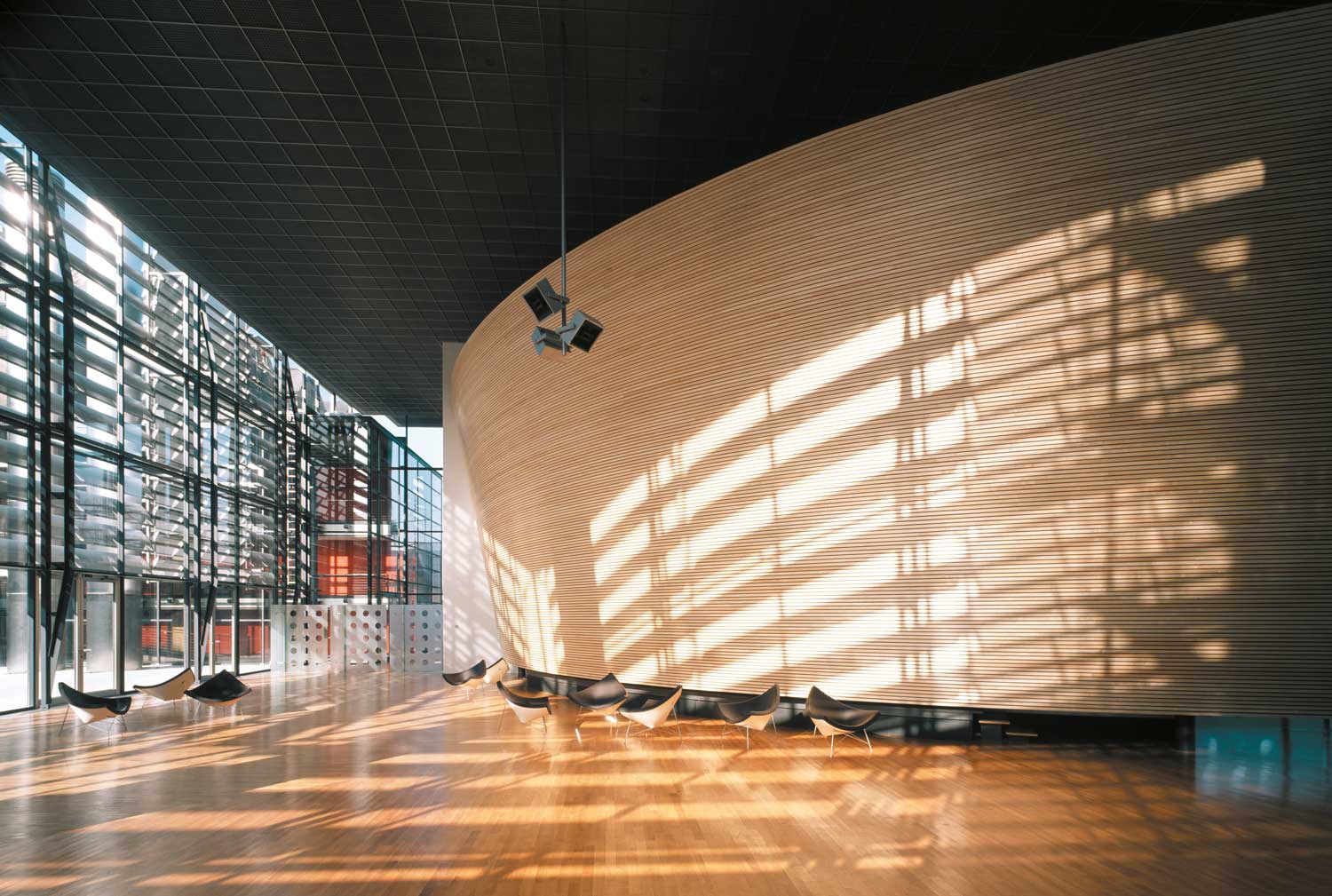Hellerau Garden City and Deutsche Werkstätten Hellerau (Hellerau German Workshops) ⎟ Renovation and new construction
In September 1992, the Treuhandanstalt privatised the Deutsche Werkstätten Hellerau (DWH – Hellerau German Workshops). By concentrating on the former division for special manufacturing, which had well-trained and experienced employees in technology and craftsmanship, a permanent renovation was achieved, so today’s Deutsche Werkstätten Group was able to reclaim its place in high-quality, individual interior design. In addition, the majority of the legendary building ensemble in the form of a screw clamp was renovated in 1998-2000 in keeping with the requirements of a listed building. Grundbesitz Hellerau GmbH has managed the building as an international business location and conference centre since 1997.
The political end to the Cold War in autumn 1989 enabled the citizens of Hellerau to express their wishes for a visible and tangible revival of the garden city.
The first phase of development in the garden city was completed around 1910 with the row of shops on the market square. It was extensively renovated in 1996-99.
Under the property developer STESAD GmbH, the garden city was given a little sister in 1998; a self-contained complex that translates the garden city idea into the 21st century.

Plenary Hall of the Sächsischer Landtag (Landtag of Saxony), 1994.
Architect: Peter Kulka, furnishing by the Deutsche Werkstätten Hellerau. © Bernadette Grimmenstein
Deutsche Werkstätten Group
In September 1992, the Treuhandanstalt privatised the Deutsche Werkstätten Hellerau (DWH – Hellerau German Workshops) as part of a management buy-in. Because the new owners did not see any chance of regaining a foothold in the crowded furniture market in the given competitive and market situation, they tried to ensure permanent recovery with the former division for special manufacturing. The Deutsche Werkstätten (German Workshops) have been working in this direction since 1993 and have transformed themselves from a mass producer into a flexible, industrial specialist workshop. In 2006, the company moved into a new building on the opposite side of the street, which houses administration, construction and production. The architect Thomas Herzog created the single-storey industrial building. Using the knowledge of the company’s 120-year history, today’s Deutsche Werkstätten Group is now active in the customised interior design of luxury yachts and properties. Around 400 employees currently work at the head office in Dresden-Hellerau and the other locations in Germany and abroad.
Living & working, culture & nature – the Deutsche Werkstätten Hellerau (Hellerau German Workshops) ensemble of buildings
Six months after the privatisation of Deutsche Werkstätten Hellerau GmbH, Treuhand Liegenschaftsgesellschaft mbH reacquired the screw clamp ensemble in March 1993, thus laying the foundation to renovate and repurpose the now listed buildings. In 1998, the social separation of the buildings from the Deutsche Werkstätten GmbH took place and the complete renovation began in the same year.
Grundbesitz Hellerau GmbH manages the building as an international business location and conference centre. The revival of art and culture and the merging of work and leisure have contributed in no small measure to its fame and attractiveness. The charming inner courtyard and prestigious conference and event rooms are now considered an insider tip in Dresden and are often used by regional and international companies for congresses, seminars, and meetings.
Revival of the garden city
The political end to the Cold War in autumn 1989 enabled the citizens of Hellerau to express their wishes for a visible and tangible revival of the garden city. An interest group for the preservation of the garden city became a citizens’ committee, from which the Verein Bürgerschaft Hellerau (Hellerau Citizenship Association) was finally founded in 1992. One of the association’s main goals was to preserve Hellerau Garden City, but the social and ecological concerns of healthy urban development also played a significant role.
The first phase of development in the garden city was concluded in 1911 with the row of shops on the market square. Riemerschmid originally planned the entire area around the market square with public facilities, but in the end only the row of shops in the south was realised.
The row of shops was redeveloped in 1996-99, revising the floor plans to create predominantly smaller flats that met the housing demand. Once the renovation work was completed, each flat was equipped with a bathroom, a central heating system, and a new electrical installation. In terms of planning, the shops were revised so the foundations are in place for future redevelopment as far as possible.
Modern living in nature – new construction by STESAD GmbH
Under the property developer STESAD GmbH, the garden city was given a little sister almost one hundred years after it was founded. In the area between Kirchsteig and Am Pfarrlehn, STESAD GmbH built 71 colourful terraced houses as well as 10 owner-occupied flats with different floor plans.
The state capital Dresden had already launched an open ideas and design competition in 1992/93 on the subject of housing in Hellerau Garden City. Together with the three competition winners, STESAD GmbH implemented the award-winning designs in 1998 as a municipal subsidiary. The overall concept is closely linked to the ideas of the garden city movement. The result is a self-contained complex that translates the garden city idea into the 21st century and reinterprets the design principles of the surrounding development.
Each terraced house has its own character. On the one hand, this prevents the impression of monotony and, on the other, corresponds to the individuality of modern living needs and lifestyles. The independent, intimate living areas with small gardens, short distances and a multitude of small paths that bring people in contact with each other have created a special social structure and a strong sense of belonging to the housing estate and the entire garden city among the new residents today.
